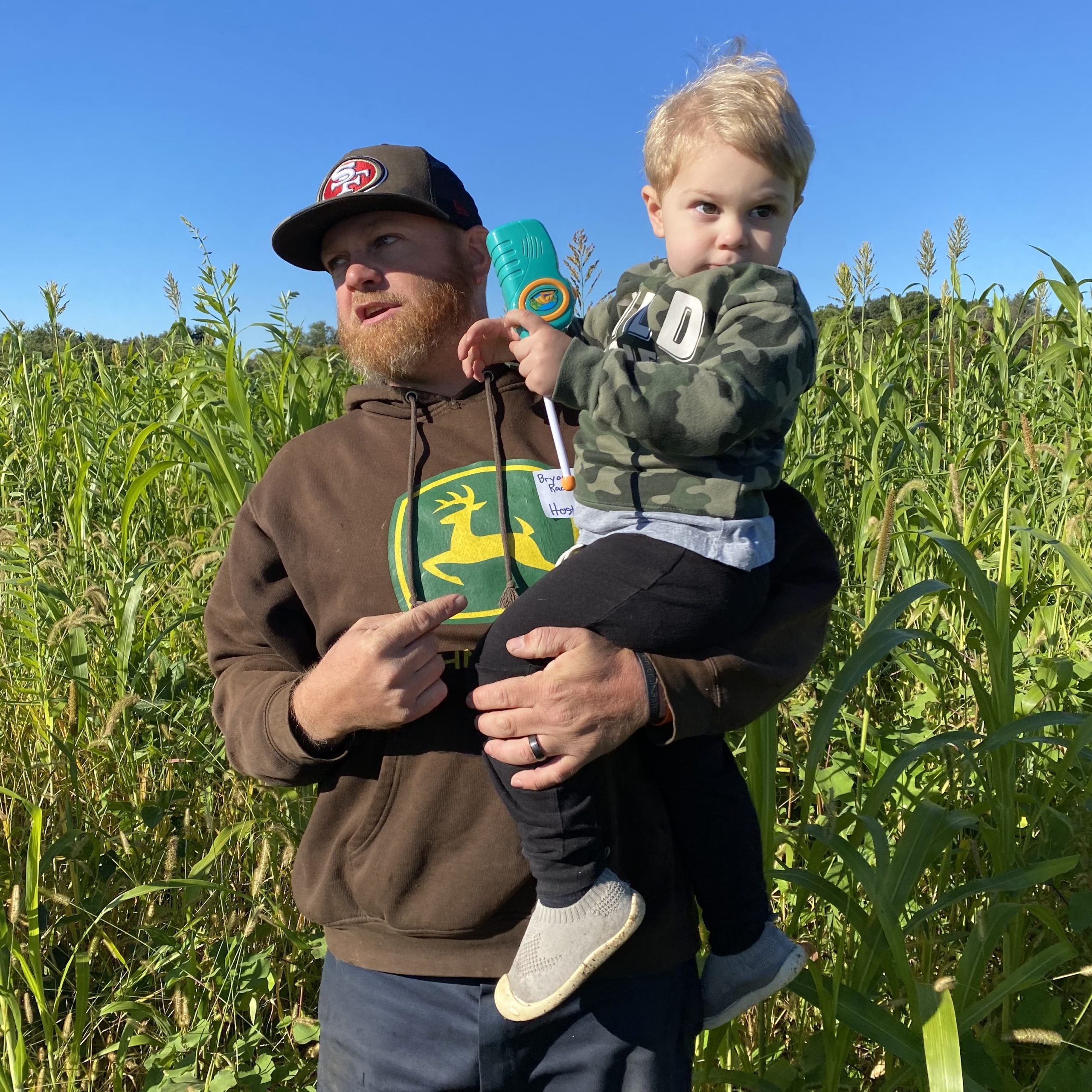Established: 1960s; introduced regenerative practices in 2017
Farm Size: 250 acres
Product/Output: Corn, beans, wheat
Region: Cecil County, MD
Favorite Piece of Farm Equipment: No-till drill
The words of cover-cropping coach Steve Groff — “if you’re not scared, then you’re not trying” — seemingly fuel all of Bryan Racine’s actions on the Racine Family Farm since taking over from his father several years ago.
The 60-year-old former dairy now spans nearly 250 acres of corn, beans, and wheat, and has, in its few years since transitioning to a no-till and cover cropping operation, already reaped the benefits that Racine has wanted to see since he began helping out as a youth.
“I’ve spent a lot of my childhood wondering how big of a ditch I’ve got to fill in today,” Racine said. “How much of our fertilizer and topsoil was washing down the creek? [Later] I was filling in ditches just to watch them fill up again, filling up diesel tank after diesel tank, and working the midnight oil to work the ground up for the rain, and I was tired of doing all that.”
After hearing about the State of Maryland’s cover crop program from a Cecil County Agriculture newsletter and learning everything he could from reading articles and watching YouTube videos, Racine immediately transitioned the farm to no-till and cover cropping, but not without challenges. The terrain is highly erodible and varied. His corn planter wasn’t yet set up for no-tilling, so he saw some stagnant yields at first.
“But it still grew corn so that showed me that I could do it,” he said. “I saw the potential, that you just had to work for it. Next year, I put a little money down in the corn planter and first year [the yield] was already better. But sometimes you’ve got to go through the hard spots to get to the good ones.”
Since then, he has seen no drawbacks. He has more time with his family because he’s spending less time working to keep the crop in place and fixing equipment, has seen a dramatic increase in earthworm and insect activity, especially when it rains, and has enjoyed experimenting outside of his comfort zone.
“You don’t know until you try it; if it doesn’t go well, then you learn for next time,” Racine said. “But if you don’t try, you never know how it would have went.”
He recognizes that his tolerance for risk may be greater than others because he has two other jobs to support his livelihood, isn’t renting land, and does not rely on the farm’s income to make ends meet. Nevertheless, he encourages others to try these regenerative practices. While his transition from conventional till to no-till is too new to show replicable results, Racine is encouraged by the increase in organic matter revealed in recent soil test results. And, he says yields on the cover-cropped fields also went up. To hone his approach and help provide financial support to minimize risk, Bryan is taking part in a project called “Site Specific Purposeful Cover Cropping,” offered through the National Fish and Wildlife Foundation, with support from MAC Partner Future Harvest, Sustainable Chesapeake, University of Maryland Extension, Maryland Department of Agriculture, and NRCS. “You just have to do a little bit of research and then just have an idea and follow through with it,” Racine says in an effort to encourage others. “Don’t be afraid to do it and try something, even if it’s a little crazy. Let the neighbors talk and don’t worry about what they say and you know, maybe one day they’ll [see the benefits and] be asking you what you’re doing.”

